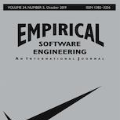We present two characterizations of positive invariance of sets under the flow of systems of ordinary differential equations. The first characterization uses inward sets which intuitively collect those points from which the flow evolves within the set for a short period of time, whereas the second characterization uses the notion of exit sets, which intuitively collect those points from which the flow immediately leaves the set. Our proofs emphasize the use of the real induction principle as a generic and unifying proof technique that captures the essence of the formal reasoning justifying our results and provides cleaner alternative proofs of known results. The two characterizations presented in this article, while essentially equivalent, lead to two rather different decision procedures (termed respectively LZZ and ESE) for checking whether a given semi-algebraic set is positively invariant under the flow of a system of polynomial ordinary differential equations. The procedure LZZ improves upon the original work by Liu, Zhan and Zhao (EMSOFT 2011). The procedure ESE, introduced in this article, works by splitting the problem, in a principled way, into simpler sub-problems that are easier to check, and is shown to exhibit substantially better performance compared to LZZ on problems featuring semi-algebraic sets described by formulas with non-trivial Boolean structure.
翻译:在普通差异方程式的流程下,我们提出了两种积极的组合差异特征:第一种特征特征使用直截了当地收集流动在设定的短期内变化的点数的内装组,而第二种特征使用退出组的概念,直直截了当地收集流动立即离开设定的点数;我们的证据强调使用真正的上岗原则作为通用和统一的证据技术,这种技术抓住了说明我们结果的正式推理的精髓,并为已知结果提供了更清洁的替代证据;这一条提出的两种特征虽然基本上相等,但导致两种截然不同的决策程序(分别是LZZ和ESE),用以检查某一半位结构在设定的组合性普通差异方程式流动下是否具有积极的反向性;LZZ的流程改进了刘、赞和赵的原始工作(EMSOFT,2011年)。在这一条中引入的程序,将问题分成一个原则性更强的方式,将问题分为两个相当不同的决策程序(分别是LZZ和ESE),与不易被描述的底色模式相比,其表现比较为比较容易于Lsmabl-blal-bal-mabal-mabal mablass mablass pral practal practal





